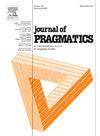Representation of threatening speech in Late Modern English trials
IF 1.7
1区 文学
0 LANGUAGE & LINGUISTICS
引用次数: 0
Abstract
When spoken threats are brought to court, one of the challenges judges and juries face is that they must decide on the legal relevance of a speech act which is usually not available as physical evidence. Instead, witnesses must resort to verbal re-enactments of the alleged threat, e.g. through the use of speech act labels and speech descriptors. This provides scholars with a unique opportunity to investigate laypersons' understandings of what constitutes a ‘proper’ threat. Using a set of trial accounts published in the Proceedings of the Old Bailey between 1837 and 1913, I analyse the metapragmatic expressions witnesses employ to represent and describe threatening speech when giving testimony during trials related to threatening behaviour and extortion. I then compare these first-order conceptualisations of threats with definitions by legal professionals and scholarly work on speech act analysis. The study shows that laypersons in the Late Modern English courtroom use metapragmatic expressions not only to report the occurrence of an illegal speech act but also to express their attitude towards disruptions of the social order.
近代晚期英语审判中威胁性言语的表现
当口头威胁被提交法庭时,法官和陪审团面临的挑战之一是,他们必须决定言论行为的法律相关性,而言论行为通常无法作为物证获得。相反,证人必须诉诸于口头再现所谓的威胁,例如通过使用言语行为标签和言语描述符。这为学者们提供了一个独特的机会来调查外行人对什么构成“适当”威胁的理解。利用1837年至1913年间发表在《老贝利诉讼》(Proceedings of the Old Bailey)上的一组审判记录,我分析了证人在与威胁行为和勒索有关的审判中作证时,用来代表和描述威胁性言论的元语用表达。然后,我将这些威胁的一阶概念与法律专业人士和语言行为分析的学术著作的定义进行比较。研究表明,近代英语法庭中的外行人使用元语用表达不仅是为了报告非法言论行为的发生,也是为了表达他们对社会秩序被破坏的态度。
本文章由计算机程序翻译,如有差异,请以英文原文为准。
求助全文
约1分钟内获得全文
求助全文
来源期刊

Journal of Pragmatics
Multiple-
CiteScore
3.90
自引率
18.80%
发文量
219
期刊介绍:
Since 1977, the Journal of Pragmatics has provided a forum for bringing together a wide range of research in pragmatics, including cognitive pragmatics, corpus pragmatics, experimental pragmatics, historical pragmatics, interpersonal pragmatics, multimodal pragmatics, sociopragmatics, theoretical pragmatics and related fields. Our aim is to publish innovative pragmatic scholarship from all perspectives, which contributes to theories of how speakers produce and interpret language in different contexts drawing on attested data from a wide range of languages/cultures in different parts of the world. The Journal of Pragmatics also encourages work that uses attested language data to explore the relationship between pragmatics and neighbouring research areas such as semantics, discourse analysis, conversation analysis and ethnomethodology, interactional linguistics, sociolinguistics, linguistic anthropology, media studies, psychology, sociology, and the philosophy of language. Alongside full-length articles, discussion notes and book reviews, the journal welcomes proposals for high quality special issues in all areas of pragmatics which make a significant contribution to a topical or developing area at the cutting-edge of research.
 求助内容:
求助内容: 应助结果提醒方式:
应助结果提醒方式:


